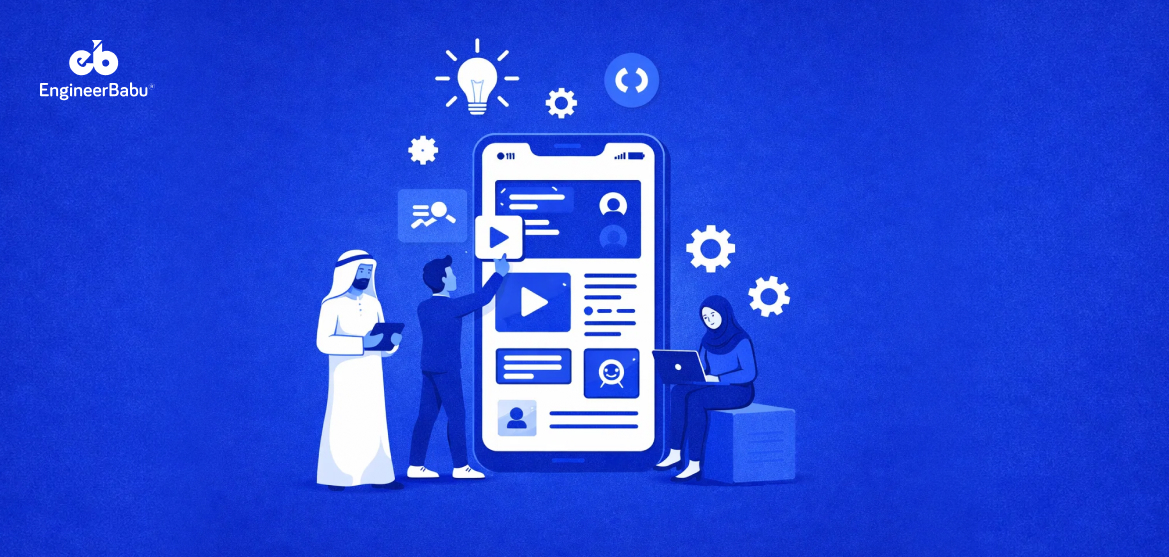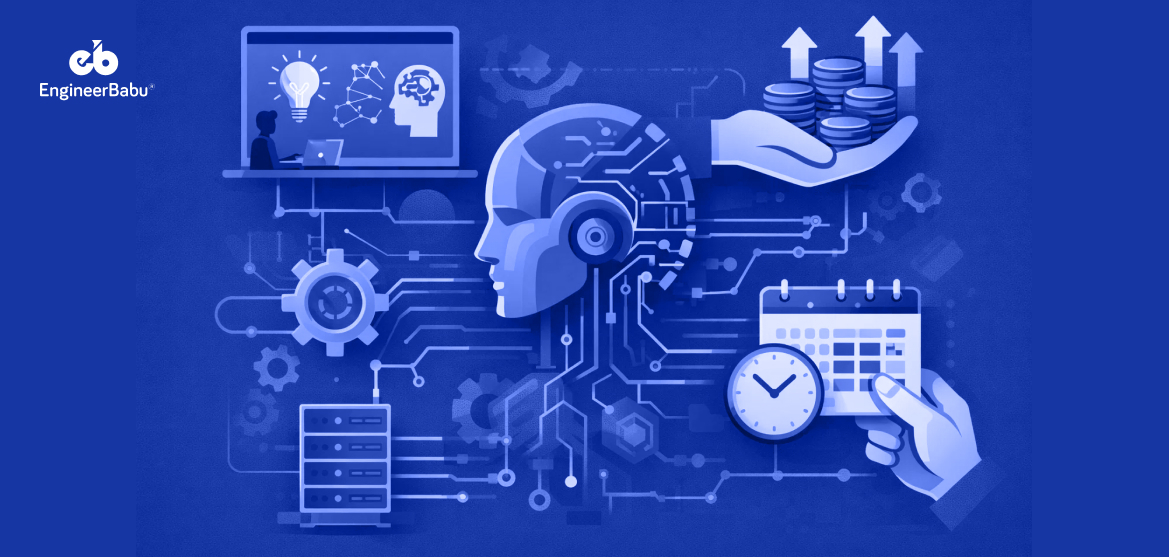Enterprise software development has a notorious reputation. It’s a complex beast filled with hidden pitfalls and shifting sands. Statistics reveal that nearly 78% of enterprise software projects go over budget or miss deadlines. Even more striking, only 29% of companies feel their development partners provide full transparency into project progress or emerging problems. This lack of visibility doesn’t just cause frustration—it can destroy trust, drive up costs, and leave teams scrambling to patch issues after they explode.
But what if it didn’t have to be this way?
What if your next enterprise app was built with clear sightlines, solid foundations, and a partnership that prioritized early problem detection and smart solutions? The truth is, building a successful enterprise application requires far more than clean code. It demands a deep understanding of shifting business priorities, airtight security, intricate legacy system integration, scalable architecture, and a user experience that empowers—not frustrates.
In this post, we’ll dive deep into the 10 critical challenges in enterprise app development every brand faces.
Common Challenges in Enterprise App Development
1. Changing Business Requirements
In large enterprises, shifting regulations and market demands frequently disrupt project scopes. For example, a sudden compliance mandate might require rapid feature changes, derailing planned work. Multiple departments often have conflicting priorities—like sales wanting CRM features while compliance insists on audit controls—making requirements volatile. Initial specs rarely cover future needs, causing rushed fixes and mounting technical debt.
Mitigation: Use agile sprints for iterative delivery. Architect the app modularly to isolate changes. Maintain ongoing stakeholder engagement with frequent demos and backlog prioritization to keep requirements aligned with evolving business goals.
2. Security and Compliance
Enterprise apps manage sensitive data, financial records, and personal info, making them prime targets for breaches. Non-compliance with GDPR, HIPAA, or SOC 2 leads to costly fines and legal exposure. For example, a lack of encryption or insufficient access controls can open doors to attacks.
Mitigation: Embed security from design through deployment: enforce end-to-end encryption, implement role-based access controls, automate vulnerability scanning in CI/CD pipelines, and maintain real-time logging and anomaly detection. Close collaboration between legal and dev teams ensures compliance is built in, not retrofitted.
3. Integration with Legacy Systems
Legacy systems lack modern APIs and up-to-date documentation, yet hold critical business data and processes. For example, a manufacturing company’s ERP built decades ago might only support batch exports, complicating real-time app integration. Changes risk breaking existing workflows, creating operational hazards.
Mitigation: Introduce middleware or API gateways to translate and orchestrate data without altering legacy code. Use batch syncing where real-time isn’t feasible. Document legacy dependencies during integration. Favor gradual modernization—building new components alongside legacy—to minimize risk.
4. Scalability Bottlenecks
Enterprise apps often serve thousands of users globally. An app built for 100 users might collapse under 10,000. Single points of failure—like monolithic services or inefficient database queries—throttle performance, risking downtime and lost productivity.
Mitigation: Design with microservices to scale components independently. Implement load balancing and caching (e.g., Redis). Use horizontally scalable databases like PostgreSQL or NoSQL options, and monitor early with performance metrics to catch bottlenecks before they impact users.
5. Performance Under Load
Even if functional, slow apps frustrate users, reduce adoption, and increase shadow IT risks. Common causes include synchronous API calls blocking UI threads, poorly indexed databases, and heavy front-end scripts.
Mitigation: Apply asynchronous processing for heavy operations, optimize database indexing, and offload non-critical tasks to background jobs. Employ front-end optimizations like code splitting and lazy loading. Use load testing tools (e.g., JMeter) pre-launch and real-time monitoring tools (New Relic, Datadog) with alerts.
6. Infrastructure Costs and Maintenance
High availability, backups, and failover systems drive cloud bills sky-high, especially when resources are over-provisioned or unused environments remain active. For example, leaving multiple test servers running 24/7 can multiply costs unnecessarily.
Mitigation: Use autoscaling to match capacity with demand, regularly audit and shut down idle resources, and set cloud budget alerts via AWS Cost Explorer or Azure Cost Management. Evaluate hybrid cloud setups when workloads are steady to optimize spend.
7. Poor User Experience (UX) Kills Adoption
Complex enterprise apps with cluttered dashboards and inconsistent workflows alienate users, driving them back to manual spreadsheets or shadow IT. UX failures reduce productivity and inflate support costs.
Mitigation: Conduct usability tests with real end-users from multiple departments early and often. Stick to proven design systems, such as Material UI, for consistency. Simplify interfaces, focus on core workflows, and ensure mobile responsiveness for flexible access.
8. Communication Breakdown Between Teams
Misaligned expectations between product owners, developers, and stakeholders cause delays, rework, and frustration. For example, developers unaware of regulatory deadlines may prioritize features incorrectly.
Mitigation: Foster transparency with daily stand-ups, clear documentation, and shared project dashboards. Use collaboration tools (Jira, Confluence) and encourage cross-functional involvement in sprint planning and retrospectives.
9. Testing Complexity
Enterprise apps require extensive testing—functional, security, performance, and compliance. Limited test coverage or automation leads to missed defects and costly production issues.
Mitigation: Develop a comprehensive test automation suite encompassing unit, integration, and end-to-end tests. Incorporate security and load testing early. Use test data management practices that respect privacy regulations. Continuous testing integrated into CI/CD pipelines accelerates quality feedback.
10. Keeping Up With Technology Evolution
Tech stacks, libraries, and frameworks evolve rapidly. Stagnant or outdated tech creates security risks, maintenance headaches, and incompatibilities.
Mitigation: Schedule regular tech audits and refactoring cycles. Encourage developers to explore new tools and updates. Adopt modular architectures to allow incremental upgrades. Plan for gradual legacy code replacement to reduce disruption.
Conclusion
Navigating the challenges in enterprise app development requires more than technical skill. It demands strategic planning, clear communication, and a flexible mindset. From shifting business requirements and stringent security demands to legacy system integration and scaling complexities, each challenge can significantly impact your project’s success.
By anticipating these hurdles early and applying thoughtful solutions, like agile practices, modular design, and continuous stakeholder collaboration, you can build enterprise applications that not only meet today’s needs but adapt to tomorrow’s demands. The right approach transforms these challenges from costly obstacles into opportunities for innovation and growth.
You know where others mess up—and you’re in a better spot to build something that works, scales, and gets used.
FAQ:
1. What’s the best way to integrate with legacy systems?
Use middleware or API gateways to bridge the gap. These tools translate data and manage communication between new and old systems without rebuilding everything from scratch. Phased rollouts also help reduce risk.
2. How do you keep cloud costs under control?
Set alerts and budgets on your cloud platform (AWS, Azure, GCP). Use autoscaling, clean up idle resources, and constantly monitor usage. Tools like AWS Cost Explorer or Azure Cost Management give visibility into where your money is going.
3. Which tools help with performance monitoring?
Popular options include New Relic, Datadog, AppDynamics, and Prometheus. These help you track CPU, memory, request speeds, database latency, and more. Always use alerts so you know before users do.
4. How do we keep up with constant tech changes?
Schedule quarterly audits of your tech stack. Encourage devs to spend time each month exploring new tools, updates, or best practices. If you’re deep in legacy code, plan gradual updates—don’t wait until things break.
5. What’s the best development approach for changing requirements?
Agile development works best here. It supports short iterations, constant feedback, and quick pivots. Combine it with a modular architecture so changes don’t break your entire app.




